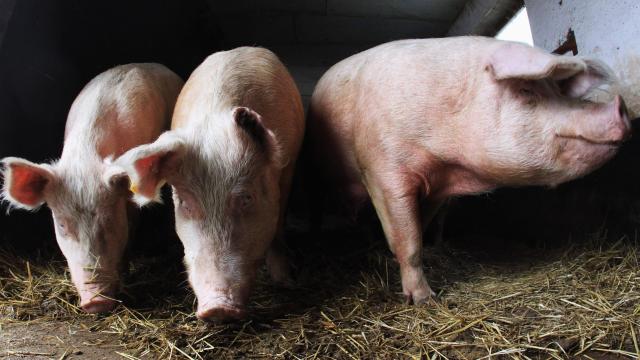When pressed for oxygen, some fish and sea cucumbers will use their lower intestines to get a little extra out of their environment. Now, a team of Japanese researchers say that mammals are also capable of respirating through their rectal cavity, at least in a lab setting.
The team’s research is published today in the journal Med and describes the capacity for mice, rats, and pigs to survive longer and have more strength in low-oxygen circumstances when given oxygen gas or an oxygen-rich liquid through their rectums, in a process similar to an enema. While fish like loaches and catfish use a similar method to gain additional oxygen in the natural world, this doesn’t appear to be an evolutionary adaptation for mammals. In other words, mammalian bodies can’t naturally do this, but with a little push from modern science, it becomes possible. Previous research has seen oxygen injected directly into mammalian bloodstreams, prolonging the lives of rabbits, but the rectal approach to the low-oxygen problem is novel.
The experiment, while disturbing, was designed to find new ways to save the lives of people whose lungs are failing.
“Artificial respiratory support plays a vital role in the clinical management of respiratory failure due to severe illnesses such as pneumonia or acute respiratory distress syndrome,” said Takanori Takebe, a gastroenterologist at Tokyo Medical and Dental University and the Cincinnati Children’s Hospital Medical Centre, and lead author of the paper, in a press release. “Although the side effects and safety need to be thoroughly evaluated in humans, our approach may offer a new paradigm to support critically ill patients with respiratory failure.”
These treatments prolonged the animals’ survival in a low-oxygen setting by staving off respiratory failure. Mice were given both the gas and liquid oxygen delivery methods, while the rats and pigs only received the liquid treatment.
In a lab-controlled hypoxic setting (a chamber that was 9.5% oxygenated), mice without the supplemental oxygenation died after about 11 minutes. With the treatment, three-quarters of the tested mice survived for nearly an hour in the same lethal conditions. The gaseous oxygen ventilation required abrading the animals’ gut lining so that the oxygen could enter the bloodstream. Because of this abrasive element, the researchers don’t expect the gas ventilation to be clinically feasible in humans. To overcome that limitation, they used an oxygenated perfluorochemical that is safe in humans and can similarly transport oxygen into the bloodstream.

The pigs, mice, and rats were rectally injected with the oxygen-rich liquid. The mice that received the treatment walked farther, and more oxygen reached their hearts. In the pigs, colour came back to the animals’ skin, which also got warmer, and their oxygen levels improved.
“This is a provocative idea and those first encountering it will express astonishment,” said Caleb Kelly, a gastroenterologist at the Yale School of Medicine, and who was not affiliated with the recent paper, in an accompanying Viewpoint article. “Yet, as the potential clinical role is considered and the data presented by Okabe et al. is examined, EVA [enteral ventilation via anus] emerges as a promising therapy deserving scientific and medical interest.”
The researchers noted the dearth of ventilators for covid-19 patients in the darkest days of the pandemic, which rages on in India and elsewhere. An alternate mode of delivering oxygen to critically ill patients could be live-saving if it gives doctors enough time to address the cause of a person’s respiratory failure.
“Many interventions that are currently used in critical care (and lifesaving) could be viewed as more invasive than EVA,” Kelly said in an email to Gizmodo. “I am simultaneously sceptical and optimistic. EVA needs further study to determine if it will be effective and safe, but the concept is exciting.”
